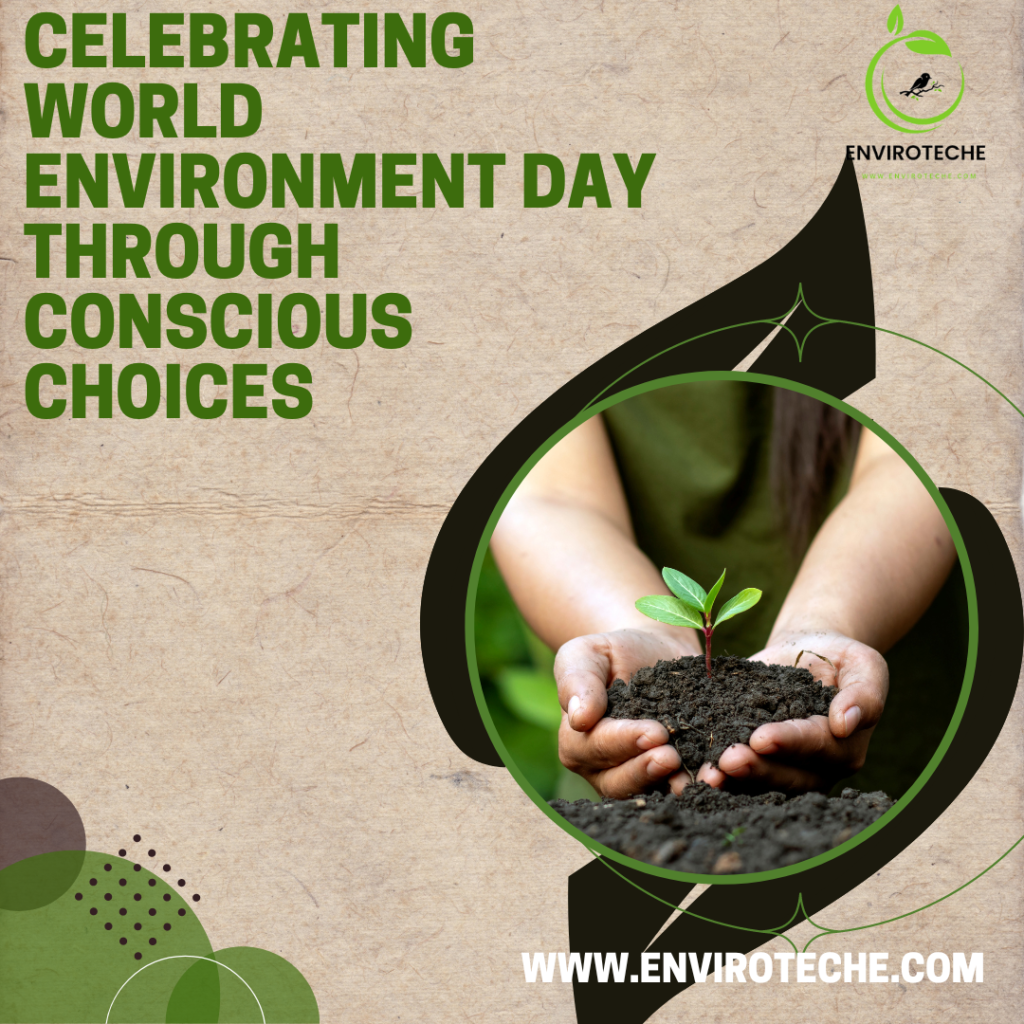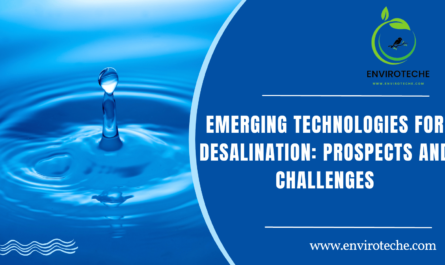
Celebrating World Environment Day through Conscious Choices
Irfan Haidri1, Muhammad Qasim1
1Department of Environmental Sciences, Government College University Faisalabad
The United Nations Environment Program (UNEP) sponsors World Environment Day every year on June 5 in order to promote environmental protection and increase public awareness of environmental issues. It provides a platform for governments, organizations, and people to unite and take actual actions in the direction of a more sustainable future. Every year, World Environment Day emphasizes a distinct theme to draw attention to a crucial environmental issue. The theme was selected to pique interest, motivate participants to act, and foster momentum for constructive change. The goal of the day is to get everyone to stop and think about how they affect the environment and how they can lessen that impact.
In this blog we discussed about world environment day, history and its importance for the sustainability of ecosystem, wildlife, recycling of nutrients and waste management.
Every year on June 5, people from all over the world come together to celebrate World Environment Day, a day intended to increase awareness of environmental issues and encourage taking action to protect the environment. It is an appropriate time to think back on the development we have made and the challenges that still lie ahead in protecting our environment for future generations as we mark 20 years since this significant event (Gills & Morgan, 2020).
On World Environment Day, numerous initiatives and activities are carried out around the world. Campaigns to plant trees, cleanup drives, recycling events, educational initiatives, policy advocacy efforts, and public awareness campaigns are a few of these. On this day, governments and organizations frequently introduce environmental initiatives and regulations designed to combat environmental problems and advance sustainable development. Additionally, World Environment Day gives people a platform to support environmental preservation (Leal Filho et al., 2018).
People are urged to implement small changes in their daily routines, such as using eco-friendly products, reducing waste, conserving energy, adopting sustainable behaviors, and giving to environmental organizations. The importance of World Environment Day can be attributed to its capacity to bring people from all corners of the world together in a common commitment to environmental preservation. The day aims to mobilize people, communities, and governments toward sustainable development and the preservation of our planet for future generations by increasing awareness and motivating action (Boulianne et al., 2020).
The Birth of World Environment Day
The United Nations General Assembly first declared June 5 to be World Environment Day in 1972, the first day of the historic Stockholm Conference on the Human Environment. Since then, this yearly celebration has developed into a platform used all over the world to motivate and inspire people to take action against environmental degradation (Sidhu & Desai, 2018).
Environment Day and Climate Change
Over the past 20 years, the critical need to combat climate change has come to be recognized throughout the world. Significant progress has been made to reduce greenhouse gas emissions and promote sustainable practices from the implementation of the Kyoto Protocol in 1997 to the Paris Agreement in 2015 (Sovacool et al., 2021). The promotion of international cooperation to lessen the effects of climate change and the awareness-raising efforts of World Environment Day have been crucial.
To increase durability and get ready for the effects of climate change, adaptation measures must be used in conjunction with mitigation efforts. In order to fight climate change and ensure a sustainable future for future generations, it is imperative that international cooperation, policy frameworks, technological innovation, and individual actions all play a significant role (Molthan-Hill et al., 2020).
Environment Day and Conservation of Biodiversity
Protecting the Earth’s abundant biodiversity is a key component of environmental preservation. On World Environment Day, it was emphasized how crucial it is to preserve endangered species’ habitats. The conservation of biodiversity hotspots and the restoration of ecosystems that have been harmed by human activity have been pursued through a number of initiatives, including the Convention on Biological Diversity and the creation of protected areas (Laffoley et al., 2019).
The preservation of biodiversity helps to ensure ecosystem resilience, promotes food security, modifies climate, and provides sources for medicines and other valuable resources. The creation of protected areas, the application of sustainable land- and water-management techniques, the prevention of habitat loss and degradation, the promotion of sustainable use of natural resources, and raising awareness among individuals and communities about the significance of biodiversity conservation are all examples of actions taken to preserve biodiversity (Comizzoli, 2018).
Environment Day and Sustainable Development
A major focus of World Environment Day celebrations has been sustainable development, which is the harmonious integration of economic growth, social development, and environmental protection. Sustainable practices have become more popular over the last 20 years in a variety of industries, such as waste management, eco-tourism, and renewable energy (Rieckmann, 2018).
Globally, the event has acted as a catalyst for the promotion of sustainable patterns of consumption and production. In the field of environmental science, sustainable development refers to the idea of achieving environmental protection, social well-being, and economic growth in a coordinated and balanced way (Jabeen & Khan, 2022). It acknowledges that economic development and human activities should not harm the environment but rather be carried out in a way that protects and improves natural resources for both the present and the future (Zhang et al., 2019).
Youth Engagement and Environmental Education
World Environment Day has emphasized the significance of youth engagement and environmental education, recognizing that young people are key stakeholders in environmental conservation (Ardoin & Bowers, 2020). The occasion has motivated young people to take an active role in defending the environment through campaigns and educational programs, empowering them to become environmental stewards and change agents.
Engaging young people in environmental projects and activities fosters their relationship with nature and their understanding of how the environment, society, and economy are interconnected. It motivates them to take the initiative to effect change by promoting sustainable behaviors and influencing decision-making procedures. Young people’s unique perspectives and enthusiasm can be used to inspire effective environmental action by providing platforms for them to express their worries, ideas, and creative solutions (Derr & Simons, 2020).
Waste management and plastic pollution
Plastic pollution is one of the world’s most urgent environmental problems today. The detrimental effects of single-use plastics on our ecosystems, oceans, and public health have come to light thanks to World Environment Day (Silva et al., 2021). An effort has been made to lessen plastic waste, encourage recycling, and support the creation of sustainable alternatives through awareness campaigns and policy initiatives.
Marine life is gravely threatened by plastic pollution. Sea turtles, seabirds, and other marine mammals accidentally ingest or become tangled in plastic debris, which can cause harm, suffocation, or even death. Additionally, as plastic degrades into smaller microplastics, it enters the food chain and may have an adverse effect on the ecosystem as a whole (Mukheed & Alisha, 2020). Microplastics may even make their way into humans through seafood consumption.
Waste management systems that are efficient are essential for addressing plastic pollution. Plastic waste has accumulated in our environment as a result of improper disposal and a lack of recycling infrastructure. Prioritizing waste reduction and promoting recycling as a sustainable solution are crucial. Key tactics in the fight against plastic pollution include encouraging the use of alternatives to single-use plastics, promoting reusable goods, and putting in place efficient recycling programs (Dey et al., 2021).
Conclusion
We recognize the advancements made in addressing the world’s environmental challenges as we commemorate 20 years of World Environment Day. But there is still a lot of work to be done. Our planet is still in danger from factors like climate change, biodiversity loss, pollution, and unsustainable practices. Every person’s actions, no matter how small, can help the group effort to safeguard our environment, as is brought home by World Environment Day. To ensure a healthier, greener, and more sustainable future for all, let’s band together and commit to sustainable practices, conservation efforts, and awareness-raising.
Reference
Ardoin, N. M., & Bowers, A. W. (2020). Early childhood environmental education: A systematic review of the research literature. Educational Research Review, 31, 100353.
Boulianne, S., Lalancette, M., & Ilkiw, D. (2020). “School strike 4 climate”: social media and the international youth protest on climate change. Media and Communication, 8(2), 208–218.
Comizzoli, P. (2018). Biobanking and fertility preservation for rare and endangered species. Animal Reproduction (AR), 14(1), 30–33.
Derr, V., & Simons, J. (2020). A review of photovoice applications in environment, sustainability, and conservation contexts: is the method maintaining its emancipatory intents? Environmental Education Research, 26(3), 359–380.
Dey, A., Dhumal, C. V., Sengupta, P., Kumar, A., Pramanik, N. K., & Alam, T. (2021). Challenges and possible solutions to mitigate the problems of single-use plastics used for packaging food items: A review. Journal of Food Science and Technology, 58(9), 3251–3269.
Gills, B., & Morgan, J. (2020). Global climate emergency: After COP24, climate science, urgency, and the threat to humanity. In Globalizations (Vol. 17, Issue 6, pp. 885–902). Taylor & Francis.
Jabeen, A., & Khan, S. A. (2022). Economic growth, social inclusion, and environmental protection: assessing the existence of green growth in Pakistan. Environmental Science and Pollution Research, 29(44), 66675–66688.
Laffoley, D., Baxter, J. M., Day, J. C., Wenzel, L., Bueno, P., & Zischka, K. (2019). Marine protected areas. In World seas: An environmental evaluation (pp. 549–569). Elsevier.
Leal Filho, W., Icaza, L. E., Neht, A., Klavins, M., & Morgan, E. A. (2018). Coping with the impacts of urban heat islands. A literature based study on understanding urban heat vulnerability and the need for resilience in cities in a global climate change context. Journal of Cleaner Production, 171, 1140–1149.
Molthan-Hill, P., Robinson, Z. P., Hope, A., Dharmasasmita, A., & McManus, E. (2020). Reducing carbon emissions in business through Responsible Management Education: Influence at the micro-, meso-and macro-levels. The International Journal of Management Education, 18(1), 100328.
Mukheed, M., & Alisha, K. (2020). Plastic pollution in Pakistan: environmental and health Implications. J. Pollut. Effects Contr, 4, 251–258.
Rieckmann, M. (2018). Key themes in education for sustainable development. Issues and Trends in Education for Sustainable Development, 61–84.
Sidhu, B. K., & Desai, B. H. (2018). Plastics pollution: a new common concern of humankind? Envtl. Pol’y & L., 48, 252.
Silva, A. L. P., Prata, J. C., Walker, T. R., Duarte, A. C., Ouyang, W., Barcelò, D., & Rocha-Santos, T. (2021). Increased plastic pollution due to COVID-19 pandemic: Challenges and recommendations. Chemical Engineering Journal, 405, 126683.
Sovacool, B. K., Griffiths, S., Kim, J., & Bazilian, M. (2021). Climate change and industrial F-gases: A critical and systematic review of developments, sociotechnical systems and policy options for reducing synthetic greenhouse gas emissions. Renewable and Sustainable Energy Reviews, 141, 110759.
Zhang, D., Morse, S., & Ma, Q. (2019). Corporate social responsibility and sustainable development in China: Current status and future perspectives. Sustainability, 11(16), 4392.

